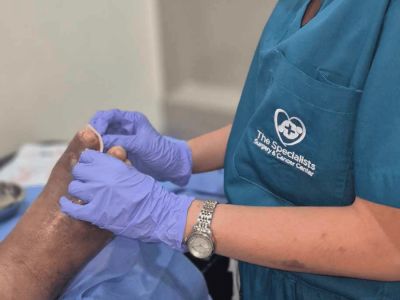Prolapse can disrupt daily life, causing discomfort, lower confidence, and difficulty with routine activities. Many factors contribute to prolapse, including childbirth, aging, or weakened pelvic support. Addressing symptoms early is crucial for effective recovery. Treatment for Prolapse Fishers at Osteopractic Physical Therapy of Central Indiana (OPTCI) offers personalized care designed to relieve discomfort, strengthen pelvic support, and help patients regain control over their bodies.
Understanding Prolapse
What Is Prolapse?
Prolapse occurs when pelvic organs, such as the bladder, uterus, or rectum, shift from their normal position due to weakened muscles or ligaments. This shift can create a feeling of heaviness, pressure, or even a visible bulge in the vaginal area. While prolapse is more common among women who have given birth, it can affect anyone experiencing pelvic muscle weakness.
Common Signs and Symptoms
Recognizing prolapse early makes treatment more effective. Signs may include:
- A sense of pressure or heaviness in the pelvic region
- Bulging tissue in the vaginal area
- Difficulty with urination or bowel movements
- Lower back discomfort
- Feeling that the bladder or bowels are not fully emptied
These symptoms indicate that the pelvic floor muscles and connective tissues need attention. Early intervention with physical therapy can prevent progression and improve overall pelvic health.
The Importance of Early Treatment
Ignoring prolapse symptoms can lead to worsening discomfort, difficulty with daily tasks, and additional complications, such as urinary or fecal incontinence. Early treatment provides an opportunity to strengthen muscles, improve function, and regain confidence. Patients who receive timely Treatment for Prolapse Fishers can expect better outcomes and often avoid more invasive procedures.
OPTCI’s Approach to Prolapse Treatment
Personalized Treatment Plans
OPTCI creates individualized treatment plans to address each patient’s specific needs. Every plan begins with a thorough evaluation of pelvic strength, coordination, and any functional imbalances. This ensures the therapy targets the root causes of prolapse rather than just alleviating symptoms.
Core Elements of Treatment
Pelvic Floor Muscle Training strengthens muscles that support pelvic organs, reducing the sensation of heaviness and bulging. These exercises are guided and adjusted based on each patient’s progress to ensure effectiveness and safety.
Manual Therapy Techniques involve hands-on methods that improve flexibility, release tension, and restore balance in the pelvic region. These techniques complement exercises by addressing underlying muscle restrictions.
Bowel and Bladder Retraining teaches patients strategies to reduce straining, improve control, and enhance daily comfort. This training supports long-term health and functional independence.
Postural and Alignment Exercises improve stability and reduce pressure on weakened muscles. Correct posture also helps prevent recurrence of prolapse symptoms.
Lifestyle Adjustments include practical guidance on daily habits, nutrition, and physical activity to support pelvic health. Small changes in routine can enhance treatment results and reduce strain on the pelvic floor.
What to Expect During Treatment at OPTCI
Treatment begins with a comprehensive evaluation. Patients discuss their symptoms, medical history, and lifestyle habits to provide the therapist with a complete picture of their pelvic health. A pelvic floor assessment may be performed to measure muscle strength, coordination, and any imbalances.
Once the evaluation is complete, patients begin gradual exercises and techniques tailored to their needs. The initial session typically lasts around one hour, providing enough time for assessment, instruction, and personalized guidance. Subsequent sessions focus on strengthening, improving function, and monitoring progress. Patients are encouraged to communicate openly about comfort levels and progress to ensure the treatment plan remains effective.
Why Choose OPTCI for Treatment for Prolapse Fishers
OPTCI combines expertise, compassion, and a patient-centered approach. Patients benefit from:
- Skilled therapists specializing in pelvic health
- Evidence-based techniques proven to improve prolapse symptoms
- A private, supportive environment for therapy
- Step-by-step guidance to restore function and confidence
Each treatment plan is designed to address the unique needs of the patient, with attention to both physical recovery and lifestyle support. The focus remains on long-term results, comfort, and regaining control over daily life.
Availability and Pricing
OPTCI provides transparent information about appointment availability and pricing. Patients can quickly check schedules and receive guidance on costs through a simple online form. This approach ensures patients can plan their care without uncertainty, allowing them to focus on recovery rather than logistics.
Start Your Recovery
Experiencing prolapse symptoms does not have to limit your life. Taking action early with specialized care can restore comfort, function, and confidence. Contact Osteopractic Physical Therapy of Central Indiana in Fishers, IN, to schedule a consultation. Expert therapists will guide you through every step, from assessment to treatment, ensuring a safe and effective recovery journey.
Book your appointment today to begin your recovery with personalized pelvic floor therapy and expert guidance.
FAQ: Treatment for Prolapse Fishers
What is prolapse and how is it treated?
Prolapse occurs when pelvic organs shift due to weakened muscles or ligaments. It is treated with pelvic floor exercises, manual therapy, lifestyle adjustments, and in some cases, specialized retraining programs.
How long does recovery take?
Recovery varies based on severity and individual response. Most patients notice improvement within a few weeks of consistent therapy, with full benefits achieved over several months.
Is prolapse treatment painful?
Therapy is designed to be gentle and tailored to each patient. Some exercises or manual techniques may cause temporary mild discomfort, but treatment focuses on safety and comfort.
Can prolapse be prevented?
Strengthening pelvic floor muscles, maintaining healthy habits, and avoiding excessive straining can reduce the risk of prolapse. Early intervention after childbirth or aging-related changes also helps prevent worsening.
How do I know if prolapse treatment is right for me?
A consultation at OPTCI allows a therapist to assess your condition, discuss symptoms, and create a treatment plan tailored to your needs. This helps determine the most effective course of action for your recovery.






